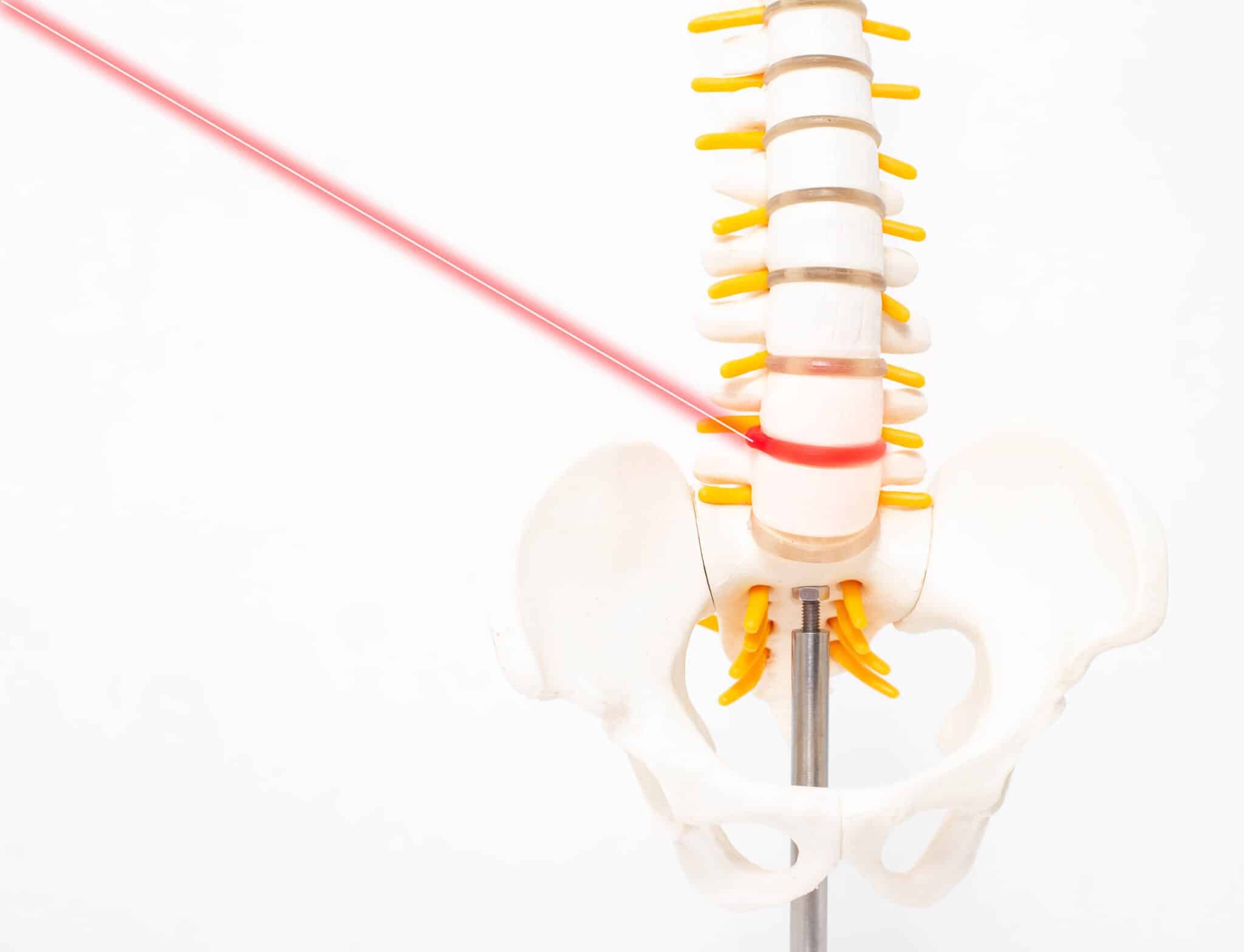Summary
Percutaneous intradiscal radiofrequency thermocoagulation (PIRFT) is a medical procedure used to treat chronic back pain, particularly pain arising from the intervertebral discs in the spine.
PIRFT involves the use of radiofrequency energy to heat and coagulate (clot) the nerve fibers within the intervertebral disc that are transmitting pain signals.The procedure involves the insertion of a specialized electrode guided by real-time X-ray imaging.
The goal of the procedure is to disrupt the pain signals and provide relief to the patient. Initial discomfort at the insertion site subsides within days, and partial pain relief may be experienced within a week or two.
What is PIRFT?
Percutaneous intradiscal radiofrequency thermocoagulation (PIRFT) is a medical procedure used to treat chronic back pain, particularly pain arising from the intervertebral discs in the spine. Intervertebral discs are cushion-like structures located between the vertebral bones that provide flexibility and shock absorption to the spine.
It involves the application of radiofrequency energy to the intervertebral discs of the spine to create controlled heat and coagulation of nerve fibers within the disc. The goal of PIRFT is to reduce pain signals originating from the damaged or degenerated disc, thereby providing relief to the patient.
Which conditions are treated with PIRFT?
Percutaneous intradiscal radiofrequency thermocoagulation (PIRFT) is primarily used to treat certain conditions that cause chronic low back pain and are believed to originate from specific intervertebral discs in the spine.
This refers to pain that originates from the intervertebral discs themselves. Degeneration, herniation, tears in the disc’s outer layer (annulus fibrosus), and other structural changes can lead to chronic pain. PIRFT aims to coagulate nerve fibers within the disc to reduce pain transmission.
What happens during the procedure?
During a percutaneous intradiscal radiofrequency thermocoagulation (PIRFT) procedure, several steps are taken to accurately and safely target the intervertebral disc causing the chronic back pain. During the day of procedure, you may expect the following:
- Preparation: The patient is positioned on the procedure table, usually lying on their stomach or back, depending on the target disc. The area where the procedure will take place is cleaned and sterilized.
- Anesthesia: Local anesthesia is administered to numb the skin and tissues at the insertion site. This helps minimize discomfort during the procedure.
- Fluoroscopic Guidance: Fluoroscopy, a real-time X-ray imaging technique, is used to guide the procedure. The fluoroscope provides continuous X-ray images on a screen, allowing the medical team to visualize the spine’s structures and accurately guide the needle and electrode.
- Needle Insertion: A thin, specialized needle is inserted through the skin and guided toward the targeted intervertebral disc under fluoroscopic guidance. The needle’s placement is confirmed using X-ray images.
- Electrode Insertion: Once the needle is properly positioned within the disc, a radiofrequency electrode is threaded through the needle and positioned in the central portion of the disc, often referred to as the nucleus pulposus. The electrode’s tip is positioned near the pain-sensitive nerves within the disc.
- Radiofrequency Energy Application: Once the electrode is in the correct position, radiofrequency energy is delivered through the electrode. This energy generates controlled heat, which is applied to the targeted disc area. The heat’s purpose is to coagulate the pain-conducting nerve fibers within the disc, thus reducing pain signals transmitted to the brain.
- Temperature Monitoring: During the application of radiofrequency energy, the temperature within the disc is closely monitored. This helps ensure that the heat generated is within safe and effective limits. Overheating could potentially cause damage to surrounding tissues.
- Electrode Removal: After the desired level of heat application is achieved, the radiofrequency electrode is carefully withdrawn from the disc.
- Needle Removal: Following the removal of the electrode, the needle is also removed from the insertion site.
What is the recovery time?
After the procedure, there might be initial discomfort or soreness at the insertion site or back, which generally subsides in a few days. Partial pain relief can be experienced within the first week or two, while full relief may develop over several weeks as coagulated nerve fibers stop transmitting pain signals.
Return to work and activities depends on the job’s physical demands: sedentary jobs might allow a return within days to a week, light-moderate activity jobs in about a week, and physically demanding jobs might require a few weeks off for proper healing.
What are the risks?
Percutaneous intradiscal radiofrequency thermocoagulation (PIRFT) is generally considered a safe procedure when performed by qualified and experienced medical professionals. However, like any medical procedure, there are potential risks and complications associated with PIRFT. Some of the risks include:
- Infection: There’s a risk of infection at the needle insertion site or within the intervertebral disc.
- Bleeding: Although the procedure is minimally invasive, there’s a small risk of bleeding at the insertion site.
- Nerve or Vessel Damage: There’s a potential risk of damage to nerves or blood vessels during the insertion of the needle and electrode. Fluoroscopic guidance helps minimize this risk, but it’s still a consideration.
- Disc Injury: The procedure involves accessing the intervertebral disc, and there’s a small risk of inadvertently causing or worsening disc damage during the insertion of the needle or electrode.
The Takeaways
Percutaneous intradiscal radiofrequency thermocoagulation (PIRFT) is a medical procedure to alleviate chronic back pain by targeting pain-conducting nerve fibers within intervertebral discs through controlled heat generation. The procedure involves the insertion of a specialized electrode guided by real-time X-ray imaging. Initial discomfort at the insertion site subsides within days, and partial pain relief may be experienced within a week or two. Risks are small but include infection, bleeding, and nerve or vessel damage. It is important to have a conversation with a healthcare provider before considering PIRFT.
